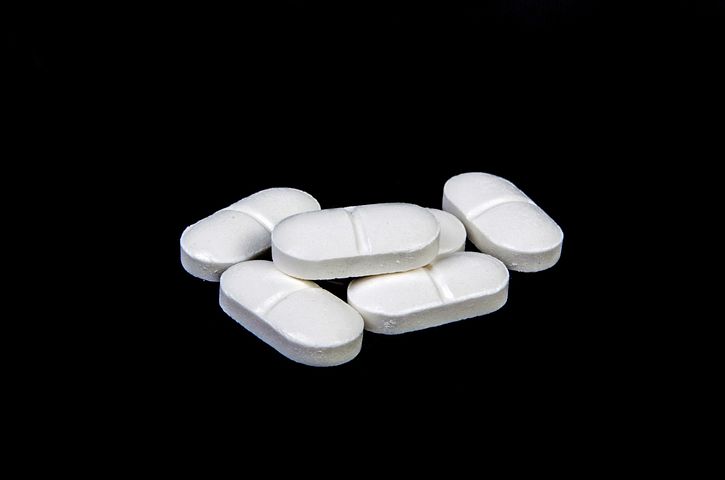The toxicity of paracetamol poisoning and its damage to the liver
 pixabay
pixabayToday in our society, a lot of people are suffering from one problem of ailment to the other. If not kidney failure you will hear is liver disease and all that.
My concern is that, a lot of us who cannot actually figure out where the problem is coming from are left with no answer to the situation on ground.
I have seen a case of a woman who happens to be having malaria and decide to take a malaria drugs for her ailment and eventually die of kidney failure due to the malaria drug she took.
In this situation now, what can we actually say is the problem. That the supposed medication which is supposed to cure us are now killing us.
Why am I saying all this, this is because today we live in an environment where people no longer care about each other, fake drugs are now multiplying every single day by day. We can no longer trust any medication due to bad government and insecurities that have taken over everywhere.
All of this are now a contributing factors to the diseases we suffer everyday.
Today I am going to be taking on a special topic called paracetamol poisoning. How this drug can actually affect our health and the possibility of damaging our liver.
I have come to understand that most liver problem we suffer in our environment today is as a result of prolonged usage of paracetamol and our carelessness on how we handle it.
Paracetamol poisoning is an excessive use of medication paracetamol. This medication can as well be called acetaminophen poisoning.
When taken in excess there may no be any obvious signs or symptoms for up to 24 hours but later start to develop some symptoms like tiredness, abdominal pain and nausea which then later accompanies by yellowish skin, blood clotting problem and confusion which can eventually lead to death.
This liver damage is not from the paracetamol direct but from its metabolites called N-acetyl-p-benzoquinone imine (NAPQI). This substance termed to decrease the liver glutathione and directly damages liver cells.
This paracetamol poisoning was first identified in the year 1960 and since then it has been discovered as one of the major causes of liver damage.
In the united state, it has been identified that 100,000 paracetamol poisoning occurs every single year and equally responsible for the greater number of overdoses in the united kingdom.
Pathophysiology
When taken in normal therapeutic doses, paracetamol has been shown to be safe.[13] Following a therapeutic dose, it is mostly converted to nontoxic metabolites via Phase II metabolism by conjugation with sulfate and glucuronide, with a small portion being oxidized via the cytochrome P450 enzyme system.[34] Cytochromes P450 2E1 and 3A4 convert approximately 5% of paracetamol to a highly reactive intermediary metabolite, N-acetyl-p-benzoquinone imine (NAPQI).[34][13][35][36][37] Under normal conditions, NAPQI is detoxified by conjugation with glutathione to form cysteine and mercapturic acid conjugates
Whenever there is overdose of paracetamol, the sulfate and glucuronide pathway becomes blocked and more paracetamol is shunted to the cytp450 to produce more of NAPQI.
When this happens there is always a decrease in the supply of glutathione as the demand is at the increase. The decrease of glutathione in the liver results to acute liver toxicity.
This are not only seen in overdose of paracetamol. Prolonged usage of paracetamol can as well lead to liver failure.
Treatment
Paracetamol poisoning can be very deadly when the liver is being affected. But can be treated with the use of activated charcoal. This charcoal helps to adsorbs paracetamol from the body.
The use of activated charcoal is possible only when the overdose was taken not too long ago.
If the damage caused by the paracetamol is much, liver transplant should be the only way which the person can be revived.
Also the use of Acetylcysteine is also important in paracetamol toxicity. This helps to reduce paracetamol poisoning by raising the body storage of glutathione.
Conclusion
Paracetamol poisoning has caused a lot of damages in our environment today. Many people are now abusing the medication by taking more than the quantity required.
Also, people have formed the habit of taken this drug even when there is no serious thing to take this drug for.
The moment we understand the devastating effect of this drug the better for us. This will help to reduce the number of liver failure we have on daily bases in the world.
Thanks for your contribution to the STEMsocial community. Feel free to join us on discord to get to know the rest of us!
Please consider delegating to the @stemsocial account (85% of the curation rewards are returned).
You may also include @stemsocial as a beneficiary of the rewards of this post to get a stronger support.